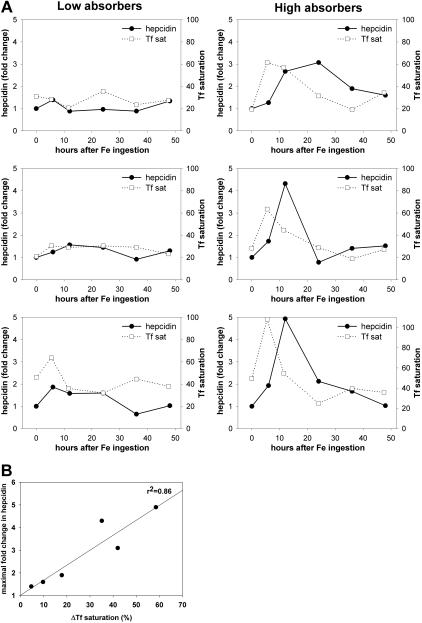Figure 1.
Hepcidin response to dietary iron is proportional to the increase in transferrin (Tf) saturation. Six subjects ingested 65 mg of iron (as ferrous sulfate) and their urinary hepcidin concentrations and Tf saturation were assayed at 0, 5, 10, 24, 36, and 48 hours after ingestion. (A) Each graph depicts the response of a single subject. Urinary hepcidin, expressed as the fold change in comparison to 0-hour levels, is shown as the solid line; percentage Tf saturation is shown as the dashed line. According to the increase in transferrin saturation, which reflects the rate of iron absorption, the subjects were grouped into “low absorbers” and “high absorbers.” (B) Correlation between the increase in urinary hepcidin and the increase in transferrin saturation after iron ingestion. The solid line represents linear regression between the maximal hepcidin increase (expressed as fold change in comparison to 0-h levels) and the maximal transferrin saturation increase (expressed as difference in comparison to 0-h levels, ΔTf saturation; r2 = 0.86, P = .007).

